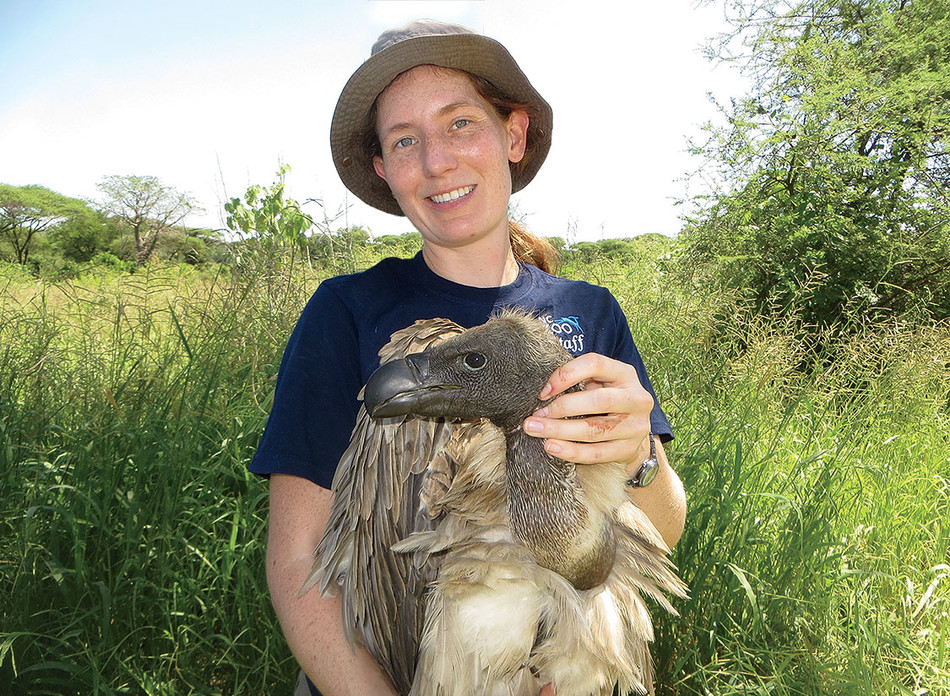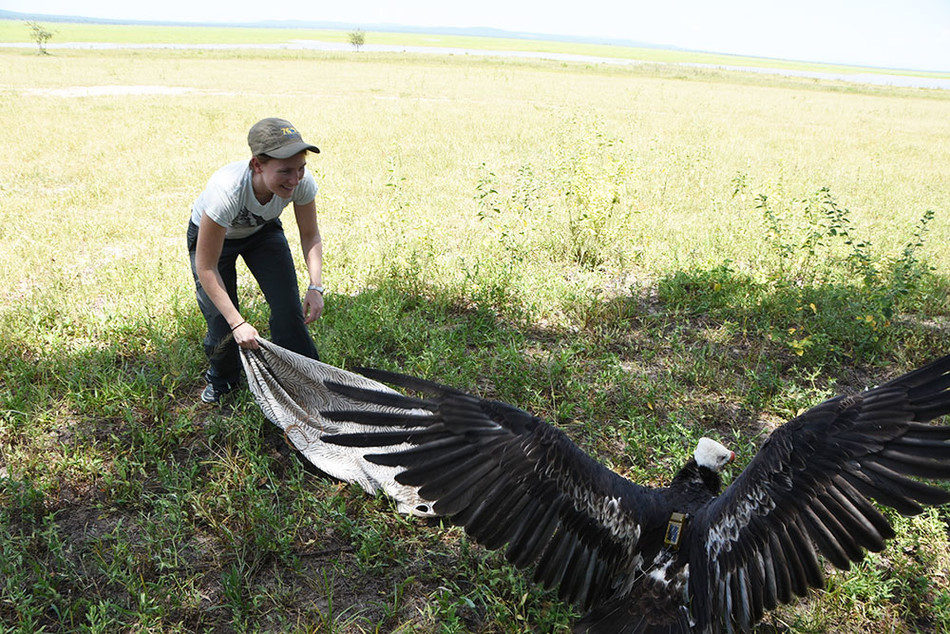Ever since Corinne Kendall ’08GSAS uttered her first word — “dog” — animals have been a constant fixation.
Growing up, the budding ecologist kept a watchful eye on skunks, porcupines, deer, and turkeys on family trips to the Poconos and would track down salamanders on hikes with her dad, a fellow nature enthusiast. In the concrete cityscape of New York, where Kendall was raised, she gravitated toward the natural world, making frequent visits to the American Museum of Natural History and the Bronx Zoo. “More or less by the age of six, I decided I wanted to be a field biologist,” she says.
Today, as a conservation biologist and curator of conservation research at the North Carolina Zoo, Kendall is focused on an underappreciated and increasingly vulnerable bird of prey: the vulture.
“Once you’ve watched vultures up close, you realize how systematic, intelligent, and socially complex these animals are,” says Kendall. “My job is to study how they interact with the environment, how they interact with human activities, and the challenges that we pose for them.”
Ten months of the year, Kendall is in Asheboro, North Carolina, where she manages the zoo’s small research team. The other two months find her overseas at the zoo’s partner sites in Tanzania, Uganda, and Zambia, keeping tabs on endangered vulture species in the wild.
Vultures, known (and notorious) for their penchant for rotting flesh, have experienced major population decline over the last few decades, due in large part to poisoning, explains Kendall. Hunters often put pesticides on carcasses to kill the scavengers, making it harder for law enforcement to detect illegal poaching (“circling vultures can indicate the presence of a large carcass and therefore help rangers find dead elephants”). Additionally, farmers sometimes use poison to retaliate against predators that kill their livestock. “When the vultures feed on the bodies, they die within a few hours,” says Kendall, adding that vultures are also sometimes killed by superstitious locals who see them as bad omens.
It’s Kendall’s job to track these poisonings in order to prevent them. Working with trained field staff and local rangers, she captures the vultures and attaches solar-powered tracking devices that sit between their wings like little backpacks. These devices allow Kendall and her team to follow the birds’ movements and detect the locations of poisonings. “The initiative helps us chart population declines but also target conservation interventions,” she says.
Kendall, who has received several grants from National Geographic as a member of the organization’s Explorers program, fell in love with vultures serendipitously more than a decade ago. While completing her master’s degree in conservation biology at Columbia’s Graduate School of Arts and Sciences, she studied hippos at Ruaha National Park in Tanzania. But after coming to terms with the obstacles to studying wild-hippo behavior (aquatic habitats, nocturnal behavior, and aggressive dispositions make the animals difficult to tag), Kendall knew she needed to focus on a more accessible endangered species.
Then she attended a Wildlife Conservation Society event featuring a discussion of the Asian vulture crisis, and her passion was officially piqued. There she learned that 99 percent of some vulture populations died between the late 1990s and early 2000s and that it wasn’t until years later that scientists discovered that the birds were inadvertently poisoned after consuming an anti-inflammatory drug called Diclofenac in the bodies of dead cattle. “No one was really studying the vultures, so population declines didn’t get noticed quickly,” says Kendall. “No one knew much about them.”
That’s starting to change, she says, as more people are waking up to vultures’ ecological importance. They may get a bad rap, but from where Kendall sits — often just fifty meters away from their feeding sites — they are fascinating creatures that offer a slew of environmental benefits. Specifically, vultures clean up carrion, or decaying animal flesh, which might otherwise attract mammalian scavengers like feral dogs that are likelier to transmit diseases.
“If people can start to think of vultures as critical members of a complex ecosystem, it becomes clearer why they’re so important.”
This article appears in the Spring/Summer 2024 print edition of Columbia Magazine with the title "To Save a Scavenger."




